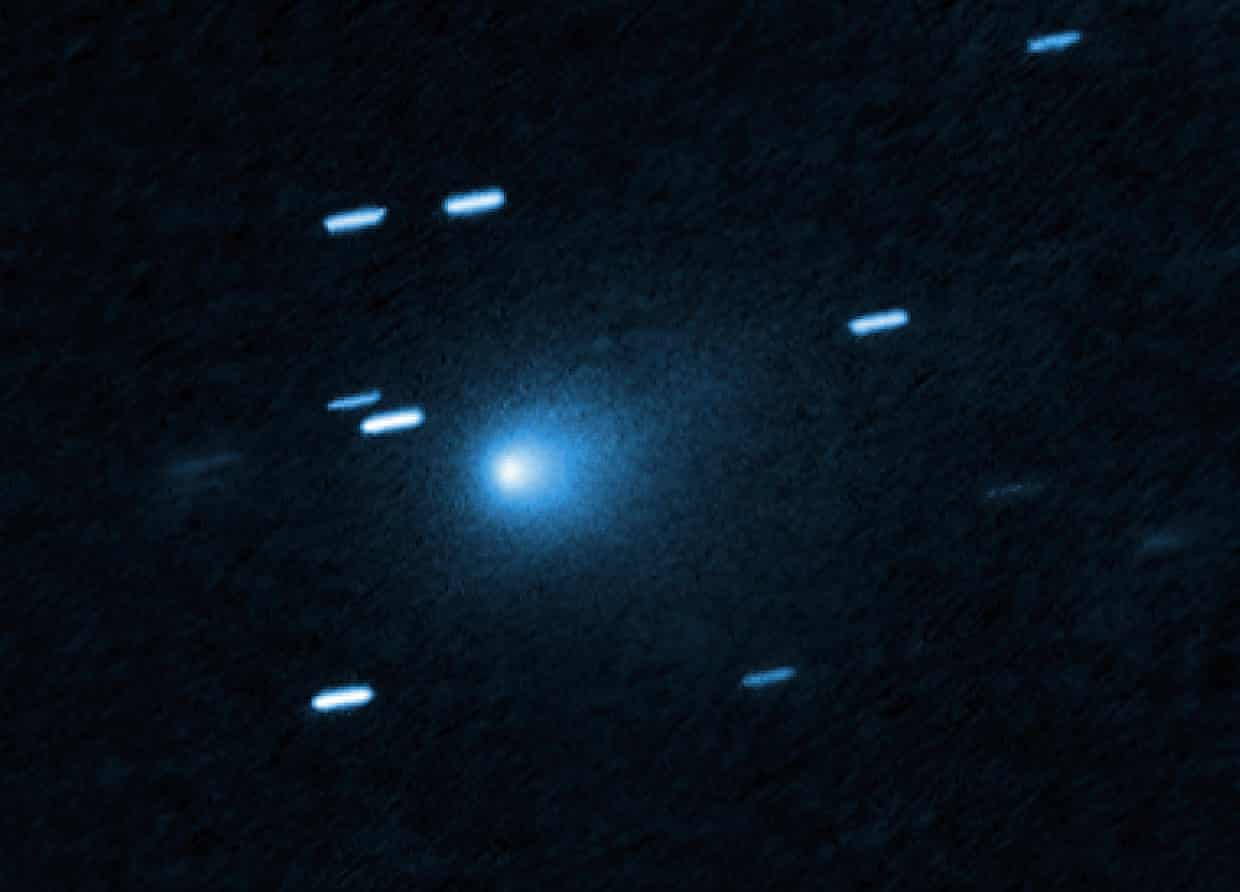A remarkable celestial event is unfolding as the interstellar object known as 3I/Atlas travels through our solar system at approximately 61 km (38 miles) per second. First detected in July 2023, this comet is only the third recognized interstellar object, following the discoveries of ‘Oumuamua in 2017 and 2I/Borisov in 2019. Scientists are eager to study this rare visitor, particularly after the Hubble Space Telescope captured its image, providing an opportunity to analyze its composition and size.
What We Know About 3I/Atlas
The designation 3I/Atlas signifies its status as the third interstellar object discovered, with “i” representing interstellar and “Atlas” referencing the Asteroid Terrestrial-impact Last Alert System, the network of telescopes that first identified it. According to Dr. Laura Driessen, a radio astronomer at the University of Sydney, the object has confirmed interstellar origins, although its exact point of origin remains unknown.
Amid speculation about its nature, scientists suggest that 3I/Atlas is likely a comet rather than an extraterrestrial craft. Dr. Rebecca Allen, co-director at Swinburne University’s Space Technology and Industry Institute, emphasizes that there is no evidence to support claims of alien involvement, stating, “There’s no evidence to point towards [3I/Atlas] being anything other than a really fun space rock that came from outside the solar system.”
The Significance of 3I/Atlas
Images captured by the Hubble telescope depict 3I/Atlas with a hazy, “fuzzy snowball” appearance, attributed to its “coma,” which forms as the comet approaches the sun, releasing gas and dust. This phenomenon presents a unique opportunity for researchers to use spectroscopy to analyze the comet’s chemical signatures and learn about its origins. Allen highlights the potential to discover whether this comet could represent a solar system with conditions similar to our own or if it comes from a vastly different environment.
The estimated diameter of 3I/Atlas is less than 5.6 km, with potential dimensions as small as 320 meters. Traveling at over 200,000 km/h, the comet is on a hyperbolic orbit, meaning it is not gravitationally bound to the sun. It will cruise through the inner solar system and pass closest to the sun between October and December 2023, coming within approximately 210 million kilometers of the sun and about 270 million kilometers of Earth.
Con Stoitsis, director of the comet and meteor program at the Astronomical Society of Victoria, notes that its interstellar origins differentiate 3I/Atlas from other comets that orbit within our solar system, such as Halley’s Comet. Stoitsis explains, “We’re not really sure where it’s going to end up until it comes around from the other side of the sun and starts heading out to the outer solar system again.”
Visibility and Future Observations
Currently, 3I/Atlas is faint but is expected to brighten as it approaches the sun, making it potentially visible through larger amateur telescopes. Stoitsis cautions that it may still only appear as a smudge in the sky and that only those with appropriately sized telescopes will likely be able to observe it clearly. He adds, “We get bright-ish comets, three or four times a year, which are visible with small telescopes and binoculars. This is definitely not one of those.”
As scientists continue to monitor 3I/Atlas, the excitement surrounding this interstellar comet underscores the potential for new discoveries about the universe beyond our solar system. The study of such objects could yield insights into the formation of solar systems and the materials that exist beyond our own.





























































